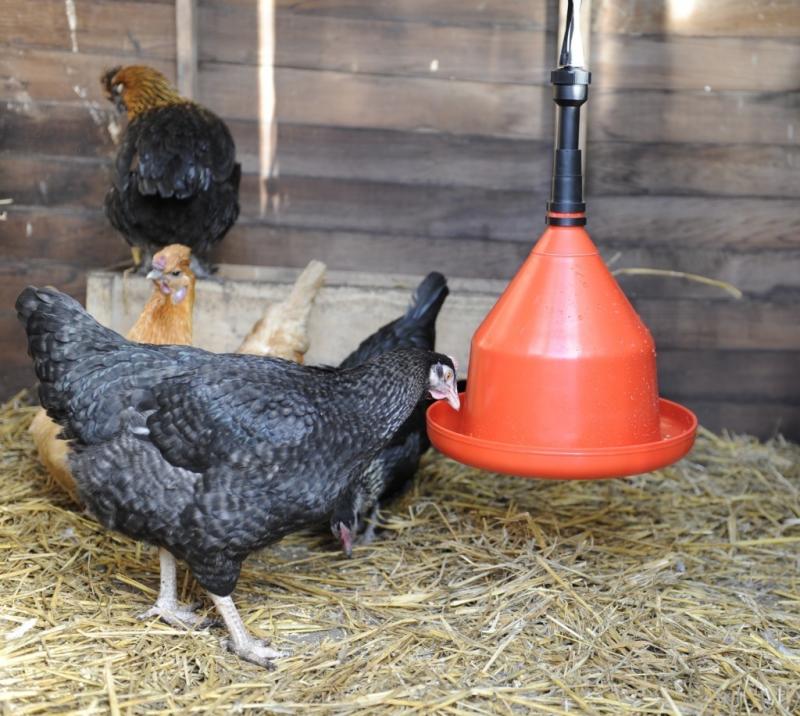
Last week was sad for me when I saw farmers losing chicks and grown up chickens to floods that are causing havoc and untold suffering to human beings and animals. It is our peak season for broiler production as we prepare for Christmas celebrations and here, we are confronted with torrential rains. To survive this wet season, there are fundamental measures we must take to help chicks cope up with the current challenge and grow to maturation with high livability, high growth rates within five weeks of production.
Good Housing
About 80 per cent of the birds swept by floods were housed in structures built along the water way and downstream. The best way to keep your family and animals safe when disaster strike is to have a good disaster plan. Brood your chicks on the higher ground. I have seen some farmers raise their floors by constructing a wire mess raised above ground by 3 feet in the same house. It works wonders and the birds have little on no contact with manure. Earthen floors during this rainy weather is a disaster in waiting and so if possible, brood in concrete floor pens that are easy to heat up and can be immediately drained incase of flood waters.
Temperature control
During this period, the birds are likely to be chilled and therefore there is urgent need to keep vigil at night and make sure the heat stove is alight and radiating enough heat to keep the chicks warm and comfortable. Though it is an extra cost, it helps to invest in temperature probes that can help you measure surface and vent temperatures while inside the units. Concrete floor temperature is good at 28-30 degree centigrade while litter temperature at 30-32 degree centigrade, ambient temperature at 32-34 degree centigrade and cloacal temperatures at 40-41 degree centigrade in the first week of life. If you fail to provide correct temperatures, chick mortality may rise and even if they don’t die, the growth rates will be retarded and result into delay in slaughter. Try to establish a good comfort zone where some birds drink, feed, play, sleep and chat with one another. An excellent indicator of ?oor temperature is the temperature of the chick’s feet. If the feet are cold, reevaluate the heating system and litter temperature.
Maximise on feed intake
It is extremely important that we encourage all chicks to feed immediately after placement, the first swallow of feed in the gut will automatically stimulate the reabsorption of the nutritious yolk into the gut. To do this, spread a roll of paper or used magazine between drinkers to cover 50 per cent of the brooding area, sprinkle about 65g/bird/day of good quality feed on the paper. Keep this paper for 4-5 days then remove. Keep weighing a sample of birds 5 per cent every day till day 7 and check for feed intake by feeling the crop of the birds after every 12 hours for the first two days.
Ventilation, improve on air quality
Always keep some minimum fresh air intake and stale air exhaust. In our type of tropical weather and in open-sided units this minimum ventilation is quite achievable naturally. My problem is that some farmers tend to seal units with polythene paper and completely reduce the level of oxygen in the environment around the chicks. This can lead to hypertension and chicks will die of a condition christened ‘water belly’.
Water quality, encourage intake
Water is life so always provide clean portable drinking water. Some farmers have never flushed their water lines or pipes since they were installed, please develop a habit of flushing water lines using diluted hydrogen peroxide (Huasan) after every crop to remove bio-films that tend to grow bacteria in the pipes. This act will reduce cases of enteric infections and poor performance, runting and stunting and E. coli infections. Chicks like water at a temperature of 250C, readily accessible and they will consume 24 millilitres of water per chick/day in the first 24 hours. This can increase when ambient temperature is high.
Adjust the waterer levels and if you are using nipple lines, ensure the pressure is right at 40ml/minute and the height adjusted accordingly, read manufacturer’s instructions.
[The writer is Head vet at Kenchic [email protected]]
Stay informed. Subscribe to our newsletter
 The Standard Group Plc is a
multi-media organization with investments in media platforms spanning newspaper
print operations, television, radio broadcasting, digital and online services. The
Standard Group is recognized as a leading multi-media house in Kenya with a key
influence in matters of national and international interest.
The Standard Group Plc is a
multi-media organization with investments in media platforms spanning newspaper
print operations, television, radio broadcasting, digital and online services. The
Standard Group is recognized as a leading multi-media house in Kenya with a key
influence in matters of national and international interest.
 The Standard Group Plc is a
multi-media organization with investments in media platforms spanning newspaper
print operations, television, radio broadcasting, digital and online services. The
Standard Group is recognized as a leading multi-media house in Kenya with a key
influence in matters of national and international interest.
The Standard Group Plc is a
multi-media organization with investments in media platforms spanning newspaper
print operations, television, radio broadcasting, digital and online services. The
Standard Group is recognized as a leading multi-media house in Kenya with a key
influence in matters of national and international interest.









